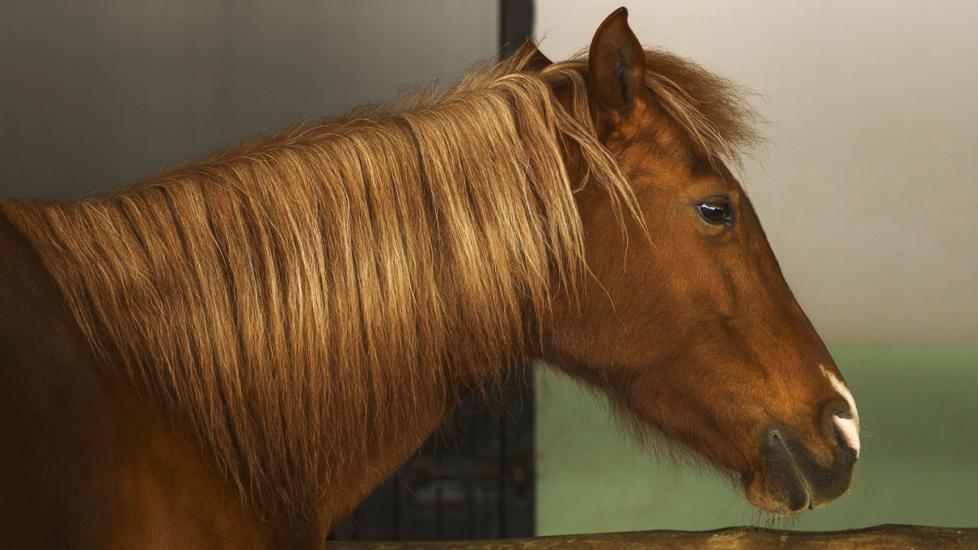How Do You Know Your Horse Is in Pain?
What Is Horse Pain?
Pain in horses can be due to an acute event such as colic or from a chronic disease such as arthritis. No matter the underlying reason for the pain, it is important to recognize pain in your horse and know what to do.
Signs Your Horse Is in Pain
Since horses are not able to verbally tell us what is hurting, it’s important that we watch for any changes in our horse’s activity level and behavior for indications of pain.
Signs/behaviors that may indicate your horse is in pain include:
-
Lameness or abnormal gait
-
Standing in an unusual posture
-
Shifting weight from leg to leg
-
Muscle tremors
-
Abnormal sweating
-
Lying down more than normal
-
Mood or temperament changes
-
Decreased appetite
-
Abnormal reaction to grooming, saddle, or bit/bridle
-
Changes in eating behavior (for example: eating on one side of the mouth, dropping feed)
-
Grinding teeth
-
Excessive drooling
-
Squinting or closed eye(s)
-
Biting or staring at a particular body region
-
Any evidence of swelling or injury
-
Pawing
-
Kicking at stomach
-
Rolling
-
Grunting
-
Lethargy/depression
If you notice any of these signs in your horse it is recommended to call your veterinarian right away.
Types of Pain in Horses
Many common conditions can be associated with specific areas of pain in horses.
Musculoskeletal Pain
-
White Line Disease (WLD)
Abdominal Pain
Eye Pain
Other Pain
Medications for Pain in Horses
NSAIDs are commonly used to treat pain in horses by helping to reduce inflammation.
-
Flunixin meglumine (Banamine) is often prescribed to treat abdominal pain–especially pain from colic
-
Phenylbutazone (Bute) is often used to treat musculoskeletal pain such as conditions associated with lameness
-
Firocoxib (Equioxx) is a newer type of pain medication and is often used for chronic or long term pain management since it has a lower risk of side effects
Local and regional treatment therapies can also be used to help treat musculoskeletal pain in horses.
-
Surpass is an NSAID that can be applied topically to areas of pain and inflammation.
-
Legend is an intravenous injection made up of hyaluronic acid to help with preventing and treating inflammation in the joint.
-
Adequan is an intramuscular injection made of polysulfated glycosaminoglycan that can help heal and aid in the long-term health of a joint.
-
Joint injections are one of the most commonly performed procedures in sport horse medicine. Joint injections typically consist of a combination of hyaluronic acid, corticosteroid, and possibly an antibiotic to help prevent infection. These can help with pain and inflammation associated with a joint and can help a horse stay comfortable for months.
Supplements for Pain in Horses
Supplements for horses can be a great preventative measure to help reduce the chances of any pain-associated conditions. When adding a supplement to your horse’s daily schedule, you are helping to maintain a horse's health over the long-term. If you feel a supplement would be good to add to your horse’s daily diet, ask your primary veterinarian for their recommendation.
There are a large variety of supplements that may be beneficial, including:
-
Joint supplements can help to maintain healthy joints and help to prevent arthritis.
-
Hoof supplements will help to promote a healthy hoof which can help to prevent foot abscesses and other food conditions that may be painful.
-
Digestive supplements can help to maintain a healthy overall gut which can reduce episodes of colic, diarrhea, and other digestive diseases that may lead to pain.
-
Gastric supplements help to promote a healthy stomach and prevent gastric ulcer formation.
The key to preventing many of the causes of pain in horses is through preventive care.
Preventative care includes:
-
Yearly veterinary exam
-
Yearly vaccinations
-
Yearly to twice yearly dental exams
-
Maintaining a deworming schedule
-
Checking your horse's body condition score often
-
Discussing your horse's diet, exercise, and lifestyle with your veterinarian
Understanding your horse's normal behaviors can help you easily pick up on something when they are acting abnormal.
Work with your veterinarian to help manage chronic pain cases. If you feel that your horse is still in pain even with pain management in place, it may be time to discuss quality of life with your veterinarian.
References
1. Colorado State University Veterinary Medical Center. Equine Comfort Assessment Scale. 2015.
2. Gaughan E. Merck Equine. Pain Recognition and Management in Horses. 2018.
3. Kentucky Equine Research. Don’t Miss Subtle Signs of Pain in Horses. March 2012.
4. Oregon Veterinary Medical Association. Signs of Pain in Horses. May 2016.
Featured Image: iStock.com/ozgurdonmaz
